Index trading allows you to invest in the wider stock markets via a single trade. The overarching concept is that the index will track a group of companies that trade on certain stock markets. For example, the FTSE 100 comprises the 100 largest companies trading on the London Stock Exchange.
Our Forex Signals
1 - month
Subscription
 Up to 15 signals daily
Up to 15 signals daily 76% success rate
76% success rate Entry, take profit & stop loss
Entry, take profit & stop loss Amount to risk per trade
Amount to risk per trade Risk reward ratio
Risk reward ratiomonth
3 - month
Subscription
 Up to 15 signals daily
Up to 15 signals daily 76% success rate
76% success rate Entry, take profit & stop loss
Entry, take profit & stop loss Amount to risk per trade
Amount to risk per trade Risk reward ratio
Risk reward ratiomonth
 Most popular
Most popular
6 - month
Subscription
 Up to 15 signals daily
Up to 15 signals daily 76% success rate
76% success rate Entry, take profit & stop loss
Entry, take profit & stop loss Amount to risk per trade
Amount to risk per trade Risk reward ratio
Risk reward ratiomonth
Lifetime
Subscription
 Up to 15 signals daily
Up to 15 signals daily 76% success rate
76% success rate Entry, take profit & stop loss
Entry, take profit & stop loss Amount to risk per trade
Amount to risk per trade Risk reward ratio
Risk reward ratioSeparate Swing Trading Group
 Up to 3 signals weekly
Up to 3 signals weekly 76% success rate
76% success rate Entry, take profit & stop loss
Entry, take profit & stop loss Amount to risk per trade
Amount to risk per trade Risk reward ratio
Risk reward ratiomonth
1 - month
Subscription
 Up to 15 signals daily
Up to 15 signals daily 76% success rate
76% success rate Entry, take profit & stop loss
Entry, take profit & stop loss Amount to risk per trade
Amount to risk per trade Risk reward ratio
Risk reward ratiotime
Ordinarily, you would need to place 100 individual orders, which would not only be extremely time consuming, but costly. Instead, by opting for an index, you can diversify with ease. Moreover, you’ll still be entitled to company dividends as and when they are paid.
3
Payment methods
Trading platforms
Regulated by
Support
Min.Deposit
Leverage max
Currency Pairs
Classification
Mobile App
Min.Deposit
$100
Spread min.
Variables pips
Leverage max
100
Currency Pairs
40
Trading platforms
Funding Methods





Regulated by
FCA
What you can trade
Forex
Indices
Actions
Cryptocurrencies
Raw Materials
Average spread
EUR/GBP
-
EUR/USD
-
EUR/JPY
0.3
EUR/CHF
0.2
GBP/USD
0.0
GBP/JPY
0.1
GBP/CHF
0.3
USD/JPY
-
USD/CHF
0.2
CHF/JPY
0.3
Additional Fee
Continuous rate
Variables
Conversión
Variables pips
Regulation
Yes
FCA
No
CYSEC
No
ASIC
No
CFTC
No
NFA
No
BAFIN
No
CMA
No
SCB
No
DFSA
No
CBFSAI
No
BVIFSC
No
FSCA
No
FSA
No
FFAJ
No
ADGM
No
FRSA
71% of retail investor accounts lose money when trading CFDs with this provider.
Min.Deposit
$100
Spread min.
- pips
Leverage max
400
Currency Pairs
50
Trading platforms
Funding Methods




Regulated by
CYSECASICCBFSAIBVIFSCFSCAFSAFFAJADGMFRSA
What you can trade
Forex
Indices
Actions
Cryptocurrencies
Raw Materials
Etfs
Average spread
EUR/GBP
1
EUR/USD
0.9
EUR/JPY
1
EUR/CHF
1
GBP/USD
1
GBP/JPY
1
GBP/CHF
1
USD/JPY
-
USD/CHF
1
CHF/JPY
1
Additional Fee
Continuous rate
-
Conversión
- pips
Regulation
No
FCA
Yes
CYSEC
Yes
ASIC
No
CFTC
No
NFA
No
BAFIN
No
CMA
No
SCB
No
DFSA
Yes
CBFSAI
Yes
BVIFSC
Yes
FSCA
Yes
FSA
Yes
FFAJ
Yes
ADGM
Yes
FRSA
71% of retail investor accounts lose money when trading CFDs with this provider.
Min.Deposit
$50
Spread min.
- pips
Leverage max
500
Currency Pairs
40
Trading platforms
Funding Methods




What you can trade
Forex
Indices
Actions
Raw Materials
Average spread
EUR/GBP
-
EUR/USD
-
EUR/JPY
-
EUR/CHF
-
GBP/USD
-
GBP/JPY
-
GBP/CHF
-
USD/JPY
-
USD/CHF
-
CHF/JPY
-
Additional Fee
Continuous rate
-
Conversión
- pips
Regulation
No
FCA
No
CYSEC
No
ASIC
No
CFTC
No
NFA
No
BAFIN
No
CMA
No
SCB
No
DFSA
No
CBFSAI
No
BVIFSC
No
FSCA
No
FSA
No
FFAJ
No
ADGM
No
FRSA
71% of retail investor accounts lose money when trading CFDs with this provider.
Interested to find out how stock market indexes actually work? If so, we would suggest reading our Learn 2 Trade 2023 Guide On Index Trading. We cover everything you need to know to start index trading today!
Note: It is also possible to short indexes through CFDs. This is ideal if you think that a recession is in the making and you think the value of the wider stock markets is due to go down.
Eightcap - Regulated Platform With Tight Spreads

- Minimum deposit of just 250 USD to get lifetime access to all the VIP channels
- Use our Secure and Encrypted Infrastructure
- Spreads from 0.0 pips on Raw Accounts
- Trade on the Award-Winning MT4 & MT5 Platforms
- Multi-jurisdictional Regulation
- No Commission Trading on Standard Accounts

What is an Index?
In its most basic form, an index is a financial instrument that allows you to invest in a group of companies. In the vast majority of cases, the index will track the price movement of stocks listed on a specific exchange. A prime example of this is the NASDAQ 100, which tracks the largest 100 companies listed on the said exchange. As an investor, this allows you to gain exposure to 100 firms without you needing to place 100 trades.
If this was the case, can you imagine how long it would take to individually buy stocks in 100 companies? Not only would you get hit with heaps of broker fees, but you would need to constantly buy and sell stocks as and when the index incorporates new companies. When you do engage in stock index trading, you will still benefit from dividend payments – as long as you are investing in an ETF. If you decide to trade the index via CFDs, you won’t.
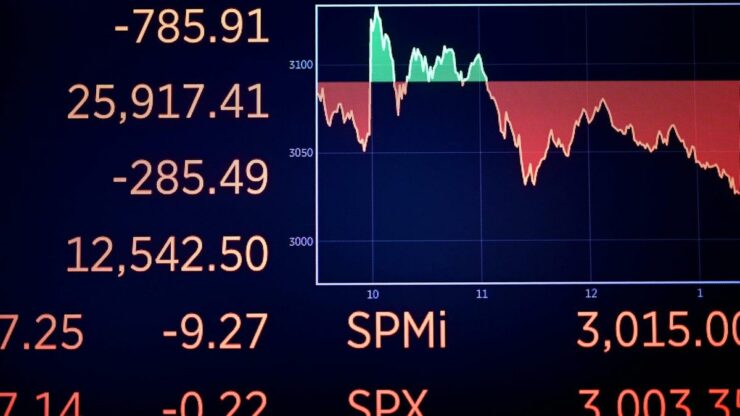
Crucially, even if a company within a stock market index went bankrupt, this won’t always be determinantal – especially in the case of the S&P 500. If you are interested in index trading on a shorter-term basis, this is possible via CFDs. This will allow you to apply leverage on your chosen index, as well as engage in short-selling. You won’t, however, be entitled to any stock dividends if you short an index, as you don’t own the underlying asset.
Pros and Cons of Index Trading
- Invest in hundreds of companies via a single trade
- An excellent way to diversify your investments
- Index funds via ETFs entitle you to dividends
- You won’t feel the full brunt if a single company goes bust
- Index funds via CFDs allow you to apply leverage and go short
- Easily invest via a debit/credit card, e-wallet, or bank account
- Invest in an index in minutes
- No guarantee that you will make money
Most Popular Index Trading Instruments
There are literally hundreds of stock market index funds traded in the global economy. To give you an idea of the most popular index trading instruments as of 2020, check out the list below.
S&P 500: The Standard and Poor 500, or simply ‘S&P 500’, is the most traded stock market index in the world. As noted earlier, it consists of the 500 largest US publicly-listed companies. This includes firms listed on both the NASDAQ and New York Stock Exchange. This particular index is the ultimate tool to invest in the wider US economy.
Dow Jones: Even if you’re a newbie investor, it’s all-but-certain that you have heard of the Dow Jones. Interestingly, although the Dow is also a great indicator of the wider US economy, it actually only consists of 30 companies. This includes large-scale firms listed on both major US stock exchanges, across multiple industries.
FTSE 100: The FTSE 100 is a UK stock market index that tracks the 100 largest companies listed on the London Stock Exchange. This is a great way to gain exposure to the wider UK economy.
NASDAQ 100: If you want to focus on the tech-orientated NASDAQ exchange, it might be worth looking at the NASDAQ 100. As the name suggests, this tracks the 100 largest companies listed on the NASDAQ. The index is dominated by Big Tech firms like Apple, Microsoft, and Amazon.
Nikkei 225: The Nikkei 225 tracks the 225 largest firms listed on the Tokyo Stock Exchange. This includes the likes of Toyota, Japan Tobacco, Honda, Nikon, and Yamaha.
Russell 2000: Unlike the S&P 500 and Dow Jones, the Russell 2000 tracks small-to-medium US companies. With 2,000 individual firms making up the index, this is another great tool to diversify across the wider US economy.
How do Stock Market Indexes Work?
Although stock market index trading is ideal for investors of all shapes and sizes, it is important to understand how the process actually works.
✔️ The Index Will Focus on Tracking
First and foremost, it is important to note that there is not a single index for each stock market. In other words, if you wanted to invest in the FTSE 100, you wouldn’t be investing in the FTSE 100 per-say. Instead, you will be investing money with an index provider. There are hundreds of index providers active in the market, each with their own pros and cons.
Crucially, the role of the index provider is to track the real-world value of the companies that constitute the index. For example, let’s say that the provider allows you to invest in the Dow Jones. In order to facilitate this on a like-for-like basis, the provider would need to physically purchase shares in all 30 companies that make up the Dow. In doing so, the index would reflect the real-world value of the companies it is tasked with tracking.
✔️ Indexes are Priced in Points
When you buy shares in a single company, you do so at a specific share price. For example, if you bought a share in Apple at $250 per stock, and later sold it at $300, this would represent a profit of $50. This is simple, as your profit and losses are dictated by the real-world value of the stock in question.
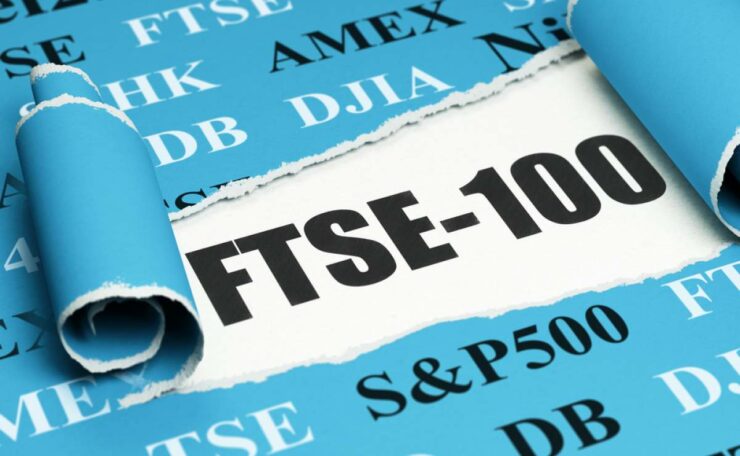
The reason for this is that the index consists of companies of varying stock prices and market capitalizations, so it wouldn’t make sense to price things up in the traditional sense. Crucially, as the index increases in points, this means that the value of the underlying companies is collectively going up.
✔️ Index Funds are Listed on Stock Exchanges
Although we cover the end-to-end investment process in more detail later, it is important to note that index funds are listed on stock exchanges. For example, let’s say that you wanted to invest in the FTSE 100. In order to do this, you might decide to use a provider like Vanguard. In this instance, you would be investing in the ‘Vanguard FTSE 100 UCITS ETF Distributing’, which is listed on the London Stock Exchange.
Although we mentioned earlier that stock market indexes are priced in points, this isn’t the case when you invest with a specific provider like Vanguard. After all, the index fund is listed on the London Stock Exchange, so it needs to be priced in pounds and pence.
The value of the stock will then go up and down in correlation to the FTSE 100 index, which is priced in points. For example, at the time of writing the Vanguard FTSE 100 UCITS ETF Distributing is priced at £26.25, while the actual FTSE 100 index itself is priced at 5,991 points.
Crucially, while Vanguard’s index fund is priced at £26.25, other providers will be priced differently, albeit, each individual index should go up and down in a similar fashion as they are all tracking the same 100 stocks!
✔️ Index Funds are ‘Weighted’
A further characteristic that you should be made of when index trading is that of ‘weighting’. In a nutshell, index funds are weighted, meaning that certain stocks will have a greater influence on the price of the index than others. For example, company’s with a much larger market capitalization will often carry a higher weighting than those that are smaller in size.
Let’s take the NASDAQ 100 as a prime example. Although the index contains 100 large companies, over 32% is made up of just three companies – Microsoft, Apple, and Amazon. While these three firms make up 10-11% of the index each, the likes of Fox Corp, Ultra Beauty, and United Airlines constitute less than 0.1% of the index!
The overarching reason for this is that a sudden market movement of these top three tech stocks in either direction can have a significant influence on the wider stock markets, so it makes sense that the weighting is adjusted accordingly.
It is important to note that not all index trading funds base their weighting system on market capitalization. For example, the Dow Jones utilizes a rather strange approach that focuses on the stock price of the company. As such, although Coca Cola has a much larger value than 3M, the latter has a higher weighting as it’s share price is almost four times higher.
✔️Companies Within an Index can Change
When it comes to the companies that make up an index, it makes sense that this will likely change at some point to reflect the wider markets. For example, as the FTSE 100 looks at the 100 largest companies in terms of market capitalization, there is always going to be firms just outside of the index that are worth more than those towards the bottom of the weighted index.
However, it would be a logistical nightmare to constantly add and remove companies within an index, as fund providers would need to buy and sell the stocks accordingly. As a result, indexes like the FTSE 100 and S&P 500 will typically review the underlying make-up once every three months.
With that being said, even if new companies are added to an index, this doesn’t affect you as an investor. On the contrary, you likely won’t even notice that the change has been made, as this is taken care of by the fund provider.
Index Trading: ETFs vs CFDs
So now that you know the ins and outs of how indexes work, we now need to look at how your investment is represented. Crucially, this will either come in the form of an ETF or CFD.
Below we examine how the two compare. Read through each section to ascertain which is right for your personal investment needs.
Ownership
If you’re looking for a long-term, highly diversified index investment, then you might be best to opt for an ETF (Exchange-Traded Fund). In its most basic form, the ETF will be managed by a tier-one financial institution like Vanguard or BlackRock.
The provider in question will then purchase each and every share within the index, as per its weighting system. In doing so, the movement of each share will mirror the index like-for-like.
In the case of CFDs (Contracts-for-Difference), you do not own the underlying asset. Instead, CFDs are created by brokers. The overarching concept is that CFDs will track the real-world price of an index.
In fact, the CFD in question will likely track a specific ETF fund provider like Vanguard. Crucially, this means that the CFD provider does not purchase any shares in the companies that make up the index.
Dividends
As the ETF fund provider is personally holding the shares that make up the index, they will be entitled to dividends. In the case of larger index funds like the FTSE 100 or S&P 500, this means that the provider will likely receive dividends throughout the month.
It would be unproductive and costly for the provider to forward on multiple dividend payments as and when they are received, so you will likely receive your share on a quarterly basis.
This won’t be the case if you opt for a CFD, as no shares have been purchased. As a result, you won’t be entitled to any dividend payments.
Index Price
Regardless of whether you opt for an ETF or CFD, the value of your index investment will be determined in a currency like US dollars or pound sterling. In the case of ETF index funds, the financial instrument will be listed on a major stock market.
For example, the previously discussed FTSE 100 index by Vanguard is listed on the London Stock Exchange. This allows you to easily invest in the ETF, as well as get your money out.
The process of pricing remains largely the same with CFDs, as the instrument will track a specific index ETF that is publicly listed. As such, the value of the CFD will likely mirror that of the ETF it is tracking.
Leverage and Short Selling
When you invest in an index ETF in the traditional sense, you will only be about to trade at an amount equal or less than your account balance. For example, if you’ve got £1,000 in your brokerage account, you won’t be able to trade more than this.
This isn’t the case when index trading CFDs, as you can apply leverage. This allows you to trade with more money than you have in your account – less a small interest fee charged by the broker.
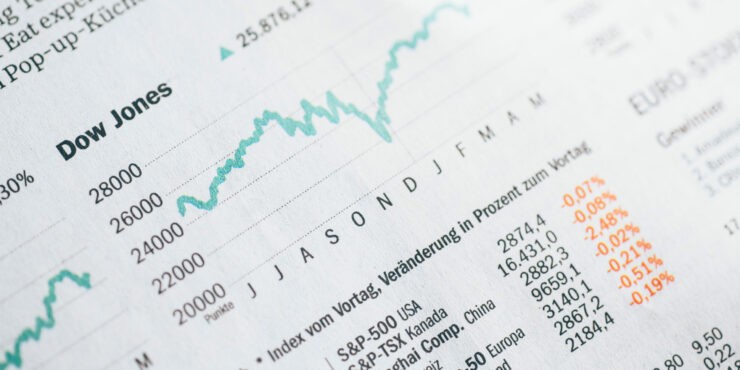
Similarly, traditional index ETFs only allow you to go ‘long’, meaning you are speculating on the index going up in value. However, index trading via CFDs also allows you to go short. This means that you can make gains if you think the stock market index will go down in value.
Index Trading Fees
As is the case with all financial instruments, you will need to pay a fee to trade index funds. The specific pricing model will not only depend on your chosen broker, but whether you opt for index ETFs or CFDs.
With that said, below we have listed some of the main fees that you will need to pay when index trading online.
The Spread
Regardless of whether you are index trading CFDs or ETFs, you will always need to pay a spread. For those unaware, this is the difference between the buy and sell price of an asset, and it’s how brokers ensure they always make money. The higher the spread, the more it indirectly costs you. As such, you should always go with an index trading site that offers tight spreads.
Index Trading Commission
You will likely need to pay a fee of some sort when you buy or sell an index fund. In the case of index CFDs, this is often a small percentage of the amount you trade. For example, if you place a buy order on a Dow Jones index at £500, and the broker charges 0.5%, then you will pay a trading commission of £2.50.
In the case of ETFs, you will either need to pay a variable trading commission like CFDs, or a flat fee. If it’s the latter, the flat fee remains the same regardless of how much you invest.
If trading commissions are charged by your broker, then you will need to pay this when you enter your position, as well as when you close it.
Expense Ratio
The expense ratio is only applicable if you are trading index funds via an ETF. This particular fee is based on the costs associated with running the ETF index fund.
For example, this will include the costs associated with running a team of traders, buying and selling the specific shares, distributing dividends, and processing payments. In the vast majority of cases, the expense ratio works out at less than 1% annually.
How to Start Index Trading Today
If you like the sound of index trading – and you want to get started with an account today, then we are now going to show you what you need to do. By following the guidelines outlined below, you could be in possession of an index investment within minutes!
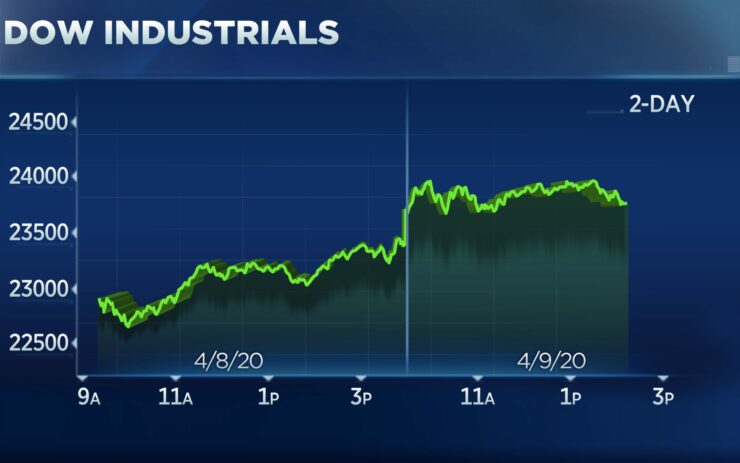
Step 1: Choose Whether you Want to Trade ETFs or CFDs
Your first port of call is to decide the type of index trading strategy that you wish to employ. For example, if you’re looking to invest in an index fund on a long-term basis – and you want to benefit from regular dividend payments, then you are best suited for an ETF.
Alternatively, if you are looking to trade indexes on a short-term basis – and have the option of applying leverage and short-selling, then you are better suited for a CFD.
Step 2: Find a Regulated Index Trading Site
Once you have ascertained whether you want to opt for CFDs or ETFs, you then need to find an index trading site. There are literally thousands of online brokers that give you access to index funds, so knowing which platform to sign up with can be challenging.
To help you along the way, we’ve provided some handy tips further down in our guide on how to choose an index trading site. If you’re keen to start trading right now, we outline our top five index trading platforms at the bottom of this page.
Step 3: Open an Account
Once you have found an index trading site that you like the look of, you will then need to open an account. To get the process started, you’ll need to provide some personal information.
This should include your:
- Full Name
- Date of Birth
- Home Address
- National Tax Number
- Residency Status
- Mobile Number
- Email Address
You will then to provide some information about your historical trading experience, so the broker knows whether or not you should have the capacity to trade with leverage.
After that, you’ll need to get your identity verified. The process is simple, and merely requires you to upload a copy of your passport or driver’s license. Most platforms will verify the document instantly.
Step 4: Deposit Funds
You’ll be trading indexes with real-world money, so you will now need to deposit some funds. Most index trading sites allow you to add funds via a traditional debit/credit card or bank account.
You might also have the option of using an e-wallet like PayPal or Skrill. Most index trading sites will install a minimum deposit amount, which you will need to meet.
Step 5: Choose an Index to Trade
At this stage of the process, you should now have a fully-fledged index trading account that is funded. If so, you now need to find an index to trade. If you have a specific index fund in mind, you should be able to search for it. If not, browse through the index (often referred to as indices) section of your chosen platform.
Step 6: Place an Order
To complete the investment process, you will now be required to place an order. The exact method will depend on whether you have opted for an ETF or CFD.
If it’s an ETF:
- Simply enter the amount that you wish to invest into the ETF
- Confirm the buy order
If it’s a CFD:
- Decide whether you want to go long (buy order) or short (sell order)
- Enter your total stake
- Enter your limit order entry price (recommended(, or simply take the next available price
- If you want to apply leverage, select your multiple
- Enter a stop-loss and/or take-profit price
- Confirm the buy/sell order
As you can see from the above, CFD investments into an index fund offer much more flexibility than an ETF.
How to Find the Best Index Trading Sites
Looking to perform some research on the best index trading sites before opening an account? If so, there are a range of key metrics that you need to look out for – which we have outlined below.
✔️ Regulation
You must ensure that your chosen index trading site is regulated. If it isn’t, avoid it. All of the platforms that we recommend on this page hold at least one regulatory license – sometimes more. This includes the likes of the FCA (UK), CySEC (Cyprus), and ASIC (Australia).
✔️ Tradable Instrumented
Once you have established the broker’s regulatory standing, you then need to explore what assets you will have access to. More specifically, while virtually every broker in the online space will list index funds, you need to assess whether these are CFDs or ETFs. In the case of eToro, the platform gives you the option of both.
✔️ Payments
You also need to ensure that your chosen index trading site supports your preferred payment method. The best way to get funds into a brokerage account is via a debit/credit or e-wallet, as the money is credited instantly. Alternatively, if you decide to use a bank account, you might need to wait a few days for the funds to clear.
✔️ Fees and Commissions
All trading activity comes at a cost, so it’s crucial that you understand the fee structure employed by your chosen index trading site. Pay particular attention to spreads, trading commissions, and if applicable – expense ratios.
✔️ Research Materials
Although you might have a specific index in mind, there might come a time where you want to perform some research on a new investment. As such, it’s best to stick with index trading sites that offer an in-house research department. This should include both the technicals and fundamentals.
✔️ Customer Service
There is nothing worse than joining a new index trading site, only to find out that customer support is below par. As such, check to see what hours the customer service team works, as well as the types of support offered. The best index trading platforms offer support via live chat 24 hours per day.
Best Index Trading Platforms of 2023
Don’t have time to research a platform yourself? Below you will find our top five index trading sites of 2023. All of our pre-vetted brokers are regulated, offer heaps of payment methods, and will specialize in either index CFDs, ETFs, or a combination of the two.
1. AVATrade – 2 x $200 Forex Welcome Bonuses
The team at AVATrade are now offering a huge 20% forex bonus of up to $10,000. This means that you will need to deposit $50,000 to get the maximum bonus allocation. Take note, you'll need to deposit a minimum of $100 to get the bonus, and your account needs to be verified before the funds are credited. In terms of withdrawing the bonus out, you'll get $1 for every 0.1 lot that you trade.

- 20% welcome bonus of upto $10,000
- Minimum deposit $100
- Verify your account before the bonus is credited
2. VantageFX – Ultra-Low Spreads
VantageFX VFSC under Section 4 of the Financial Dealers Licensing Act that offers heaps of financial instruments. All in the form of CFDs - this covers shares, indices, and commodities.
Open and trade on a Vantage RAW ECN account to get some of the lowest spreads in the business. Trade on institutional-grade liquidity that is obtained directly from some of the top institutions in the world without any markup being added at our end. No longer the exclusive province of hedge funds, everyone now has access to this liquidity and tight spreads for as little as $0.
Some of the lowest spreads in the market may be found if you decide to open and trade on a Vantage RAW ECN account. Trade using institutional-grade liquidity that is sourced directly from some of the top institutions in the world with zero markup added. This level of liquidity and availability of thin spreads down to zero are no longer the exclusive purview of hedge funds.
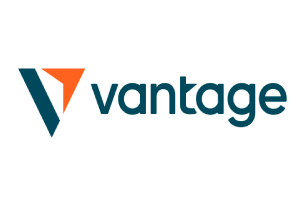
- The Lowest Trading Costs
- Minimum deposit $50
- Leverage up to 500:1
Conclusion
In conclusion, index funds are a great way to invest in the wider stock markets. Whether you want to gain exposure to stocks in the US, UK, Japan, or elsewhere – you can invest in hundreds of companies via a single trade. This also makes it an excellent way to create a highly diversified portfolio of equities.
What we also like about index funds is that you get to choose the underlying structure. For those of you looking to enjoy regular dividend payments, ETFs will suffice. Alternatively, if you want to trade index funds on a shorter-term basis, you’ll be best suited for CFDs.
Either way, we hope that our guide has helped clear the mist on how index trading works. If you do want to get started with a trading account right away, we would suggest checking out the merits of one of our five pre-vetted index trading sites.
AvaTrade - Established Broker With Commission-Free Trades

- Minimum deposit of just 250 USD to get lifetime access to all the VIP channels
- Awarded Best Global MT4 Forex Broker
- Pay 0% on all CFD instruments
- Thousands of CFD assets to trade
- Leverage facilities available
- Instantly deposit funds with a debit/credit card

FAQs
Will I receive dividends when I invest in an index?
What is an index fund CFD?
Why are index funds priced in points?
How do you invest in an index fund?
How much leverage can I trade index funds with?
What payment methods can I use when index trading?
What fees do I need to pay when index trading?

